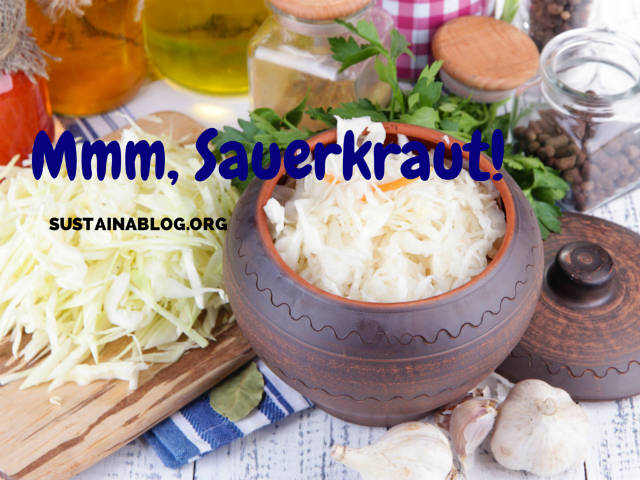C’mon, you know it’s happened to you: you buy lots of fresh produce with all sorts of good intentions, and a sizable portion of it ends up starting the composting process in your crisper drawer. I don’t know how much of the 40% of American food that gets wasted meets its demise this way, but I’m guessing its a fair amount. We want to cook with fresh foods, but our schedules sometimes get the best of us. So, I’m guessing these competing interests of our desire for fresh, healthy foods and our busy schedules have contributed to the growing popularity of home fermentation.
First, of course, fermented foods are delicious: in fact, I came across one person’s observation that all the good foods are the fermented ones. Bread, cheese, beer and wine, and other goodies do require this chemical process discovered by our ancient ancestors; yogurt, sauerkraut, kimchi, and other foods are easy to make at home with that food that might go over otherwise. While I haven’t yet dipped my toe into the wonderful world of fermentation – yogurt is first on my agenda – I have dug into a new guide and recipe book designed to ease the process. The Everyday Fermentation Handbook carries the subtitle A Real-Life Guide to Fermenting – Without Losing Your Mind or Your Microbes, and Branden Byers writing style and recipe choices really make the seemingly magical process of fermentation approachable.
Fermentation: Art & Science
Byers, who also produces the Ferm Up! podcast and blog, provides just enough background on the science of fermentation to make a newb comfortable (but not bored): I want to make sauerkraut, not get a Master’s in microbiology. His voice definitely comes through as someone who uses the audio medium for sharing information, which generally makes for easy reading. While he’s clearly spent a lot of time learning about fermenting food, he keeps the assumptions about your knowledge and familiarity with terms minimal. There’s an occasional passage or two where his need to entertain goes on just a bit longer than it needs to, but those are few and far between, and don’t distract from the information a newcomer wants.
So, What Can I Ferment?
The real strength of this book is the recipes, and Byers does a very nice job of taking the reader by the hand and guiding them from the simple to the complex. Want to get started with a very simple sauerkraut or kimchi? You’ve got a number of options with thorough directions: again, Byers doesn’t assume that, say, “massaging cabbage” has meaning for you. Want to try something a bit more complex, like tempeh or nattō? The book has you covered. Want to cook or bake with fermented ingredients that you’ve made? Byers has included all sorts of recipes along these lines, from Sriracha Cabbage Soup to Peanut Butter and Sauerkraut Cream Cookies.
I’m so ready to start fermenting that I plan to ask for either a box of quart-sized Mason jars or a filtering water pitcher for my birthday (seriously!). While I’ve been poking around with the concept for several months, The Everyday Fermentation Handbook has made this process seem accessible to me. I plan for this book to be dog-eared and stained in a matter of months…
Byers’ book is pretty new, but if you’ve had a chance to check it out, let us know what you think.
Image credit: Shutterstock

